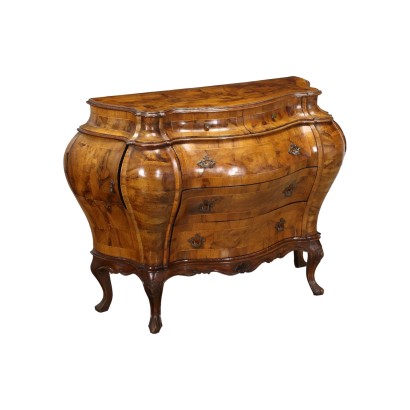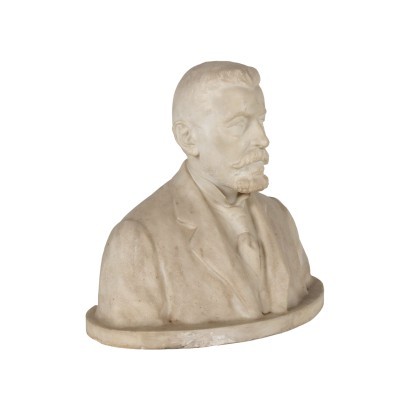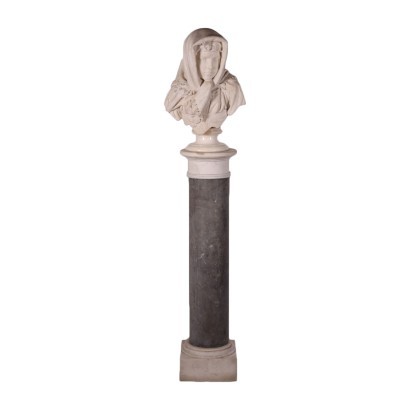Baroque Chest of Drawers Walnut - Italy XX Century
Features
Style: Barocchetto Revival
Age: 20th Century / 1901 - 2000
Origin: Italy
Material: Walnut Burl Veneer , Cloth
Description
Chest of drawers in baroque style veneered in walnut and briar walnut, entirely threaded in maple. Rounded structure with wavy front with 4 drawers and pair of doors on the sides, carved apron, wavy legs. Interior lined in fabric.
Product Condition:
Product that due to age and wear may require restoration and resumption of polishing.
Dimensions (cm):
Height: 86
Width: 118
Depth: 49
Additional Information
Style: Barocchetto Revival
Ripresa stilistica, del 900, delle forme proprie dello stile Barocchetto ('700)Age: 20th Century / 1901 - 2000
20th Century / 1901 - 2000Main essence:
Maple
Hard, light wood used for inlays. It grows mainly in Austria, but it is widespread throughout the northern hemisphere, from Japan to North America, passing through China and Europe. It is one of the lightest woods ever, tending to white, it is similar to lime or birch wood. The briar is used in the production of ancient secretaires .Walnut
Walnut wood comes from the plant whose botanical name is juglans regia , probably originally from the East but very common in Europe. Light or dark brown in color, it is a hard wood with a beautiful grain, widely used in antique furniture. It was the main essence in Italy throughout the Renaissance and later had a good diffusion in Europe, especially in England, until the advent of mahogany. It was used for solid wood furniture and sometimes carvings and inlays, its only big limitation is that it suffers a lot from woodworm. In France it was widely used more than anything else in the provinces. In the second half of the eighteenth century its use decreased significantly because mahogany and other exotic woods were preferred.Material:
Walnut Burl Veneer
Cloth
It could also interest you
























